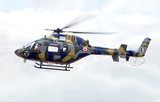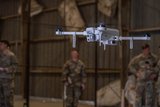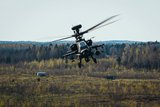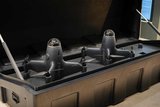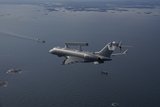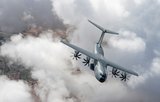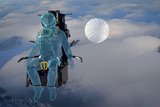NZ begins the search for replacement naval helicopters
New Zealand operates eight SH-2G(I) Super Seasprite helicopters procured second-hand from Australia. (Photo: NZDF)
New Zealand kicked off a market research exercise seeking a replacement maritime helicopter by issuing an RfI on 24 April.
Officially called the Maritime Helicopter Replacement (MHR) project, it encompasses five aspects: naval helicopters, UAVs, through-life support, training systems and mission support system integration.
The future MHRs will perform the military roles of anti-surface and anti-submarine warfare, joint fires support, ISR and force protection. Other support roles include search and rescue, air logistics support (e.g. vertical replenishment), casualty evacuation and boarding operations.
New Zealand is looking for a contemporary solution to conduct multi-domain warfare, which offers increased littoral and land effects,
Already have an account? Log in
Want to keep reading this article?
More from Air Warfare
-
![Dubai Airshow 2025: Edge Group eyes international market expansion, unveils new UAVs]()
Dubai Airshow 2025: Edge Group eyes international market expansion, unveils new UAVs
The UAV portfolio expansion comes in the wake of the Edge-Anduril joint venture announced ahead of the airshow.
-
![European firms express interest in filling NATO airborne early warning replacement needs]()
European firms express interest in filling NATO airborne early warning replacement needs
The comments from both Saab and Airbus on their potential to fulfil the airborne early warning and control requirement come after NATO countries shelved plans to procure six E-7 Wedgetail AEW&C aircraft.
-
![Dubai Airshow 2025: Lockheed’s AGM-158 XR flight tests planned for 2026]()
Dubai Airshow 2025: Lockheed’s AGM-158 XR flight tests planned for 2026
The AGM-158 XR, which started as a Lockheed Martin internal investment, was first unveiled in September 2024.
-
![Dubai Airshow 2025: Airbus reveals progress on drone mothership plans for A400M]()
Dubai Airshow 2025: Airbus reveals progress on drone mothership plans for A400M
Airbus is working to expand the mission capabilities of its A400M aircraft, including a 40t payload increase, to boost Europe’s defence capabilities.
-
![How are next-generation ejection seats helping pilots when they need it most?]()
How are next-generation ejection seats helping pilots when they need it most?
The ACES 5 ejection seat from RTX’s Collins Aerospace introduces new, innovative and patented technologies to help save lives.







